Rag rugs - introduction
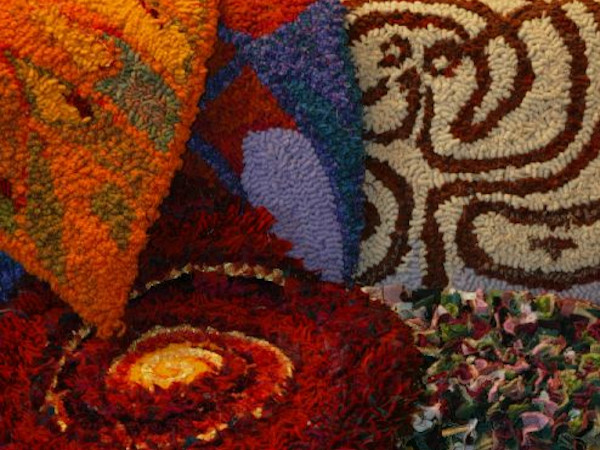
“If you couldn’t afford a carpet and you either got out of bed onto cold lino or you chopped up your old clothes and made a mat then you were going to chop up your old clothes and make a mat!” – Carole Fife
Contents
What are rag rugs?
They are traditional rugs/mats made from recycled old clothes, linen, bedsheets etc. Rag rug making was practiced by the poor – it was a low-income necessity. Textiles used to be very labour-intensive to make and were never thrown away – they were re-used and re-used until they fell apart. Rag rugs were very common in working-class homes in the UK in the 19th century, but the origins could be much earlier, although it’s difficult to be accurate: as it was a low-status craft the history isn’t well documented. In the 19th century, people used coal sacks or food sacks (flour, sugar etc.) as backing, then if they were lucky they could find a tool for pushing or pulling bits of old cloth through the backing to make a rug. People also improvised tools, using things like large nails, if they were really poor.

Bauhaus-inspired progged rug.
They had different names in different parts of the country. In Scotland, for example, they’re clootie mats, and in Yorkshire, peg mats. There’s a theory that they developed from techniques brought over by the Norse invaders many centuries ago. They still have a technique in Sweden where they weave fabric strips as a ‘weft’, to make rugs.
The most common traditional uses for rag rugs were as ‘slip mats’, to go in front of the door to stop draughts, as floor mats by the side of beds or in front of the fire, and sometimes they were put on beds at night (they didn’t have duvets), and on the floor during the day. They didn’t tend to last, as they were considered low status / value. They worked their way through the household, from bedside or fireside, to front door, to back door, to dog kennel, to compost heap. Nice young ladies were taught embroidery, never rag rugging. If you knew how to do it, you were poor, or at least from a poor background.

Rag-rug making session at Ludlow green fair.
Different techniques
Hooked rugs: thin strips of fabric are hooked up through the hessian backing, so that from the front, the hessian is covered with small loops (loop pile). This is the best technique for pictorial detail, and in North America a tradition developed of rugs depicting landscapes or animals – early settlers’ lives. Hooked rugs are very popular in the US. In 1880 the speed hook was invented in Ohio. It’s an articulated tool with two parts that move together, so instead of pulling loops to the top surface, they’re pushed through from the back, which is much quicker. In the American Museum in Bath there are examples of early US hooked rugs, and in the Beamish Museum in County Durham there are examples of early English ones.

‘Home sweet home’ hooked rug.
Progged (or prodded) rugs: small pieces of fabric are pushed or pulled through hessian backing to produce a shaggy texture. This was the most common style in the UK, but wasn’t found in the US. The hessian was stretched on a frame which would rest horizontally between table and chairs, and the whole family would work on a rug, as a winter activity. The most common tool used was half a wooden clothes peg sharpened to a point, and in remote rural locations, animal horns were sometimes used.
Plaited (UK) or braided (US) rugs: strips of fabric are plaited and laced or sewn together to make a mat. This is the slowest technique, because of the stitching, but it’s big in the US where braided rugs are highly prized.

Plaited rug.
What are the benefits of rag rugs?
- Recycling of fabrics
- Thrift
- Therapeutic, stress-relieving and fun
- You can easily and quickly produce beautiful and useful items for your home, or for gifts
- It’s a very accessible skill – you don’t need a long apprenticeship
- You can be creative and push the boundaries of a traditional craft to artistic status
- You can make rugs from items that have sentimental value, for example your own or your children’s clothes when they’re outgrown
The history of the rag rug (but men can do it too!).
What can I do?
You can buy rag rugs from craftspeople, and some will take commissions for your own design. Traditionally, there was always someone in the village or neighbourhood who would make you a rag rug. That’s slightly more difficult now, but you can find rag rugs online, in craft shops or at textile shows (e.g. the Knitting & Stitching Show). Alternatively, you can get a book or go on a course (see resources) and learn how to do it yourself. If you’re lucky, you might have a relative who could teach you.

Some tools used in rag rug making.
Start saving your old T-shirts – but really, there can’t be many homes without a stash of old pieces of fabric in a box somewhere. The easiest way to start is to get a bodger – a tool with a pincer action specifically for making shaggy rag rugs. You can get them from our partner Jenni, along with a DVD, a book, and even a starter kit, with bodger, hessian marked with a simple design and instructions – just add fabrics.

Progged rug available as a kit.
Start with a sack or some upholstery hessian, the size that you want the rug, plus enough to turn a hem under, about 10cm all the way round. Draw the outline, and any design on it with marker pen. Cut your pieces of cloth into strips roughly 7cm x 3cm and pull them through the hessian with a bodger or poke them from the back with something pointed. Maybe start with a small project like a seat mat, so that you have a finished article relatively quickly for your first attempt. Improvise with different techniques and try using different types of fabric to see what works best for you.

Our advisor making a progged rug.
Specialist(s)
Thanks to Jenni Stuart-Anderson for information.
The specialist(s) below will respond to queries on this topic. Please comment in the box at the bottom of the page.
 Jenni Stuart-Anderson started rag rug making as a hobby, and in 1987 she started sharing traditional techniques in workshops, having taught in an art college before escaping from London to rural Herefordshire. Jenni has written two books: Rag Rug Making (4 reprints, currently sold out) and More Rag Rugs & Recycled Textile Projects, plus DVD Rag Rug Workshop (both available from Jenni). (Warning – this craft can be addictive).
Jenni Stuart-Anderson started rag rug making as a hobby, and in 1987 she started sharing traditional techniques in workshops, having taught in an art college before escaping from London to rural Herefordshire. Jenni has written two books: Rag Rug Making (4 reprints, currently sold out) and More Rag Rugs & Recycled Textile Projects, plus DVD Rag Rug Workshop (both available from Jenni). (Warning – this craft can be addictive).
Comments


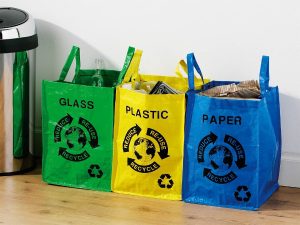
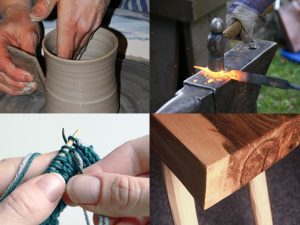
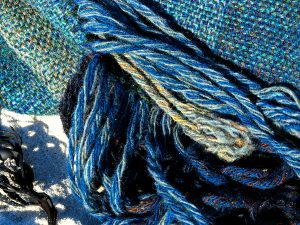
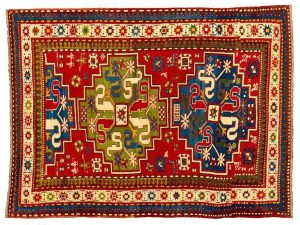
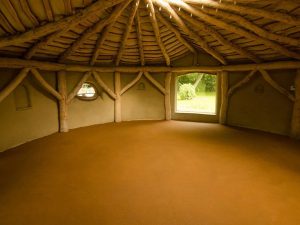
3 Comments
I have sacks of material as I upcycle clothes and make kiddies clothes. I bought a rug hook from charity shop, didn’t know what it was but it looked interesting with its wooden handle, my friend told me. Will give this a go sometime and yes a seat mat would be a great start
My grandson aged just 11 recently did some rag rugging at school and loved it. I would like to get him going with a basic workshop. Do you take on children?
Hi – depends on the course provider – click on ‘courses’ in resources, to check providers near you.